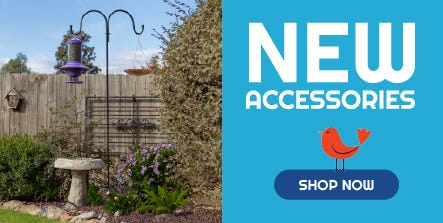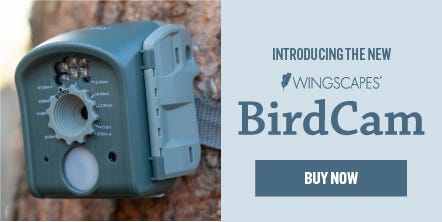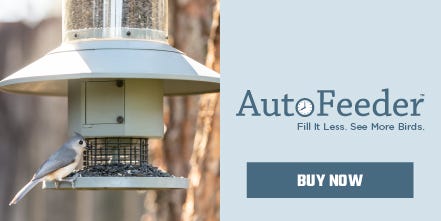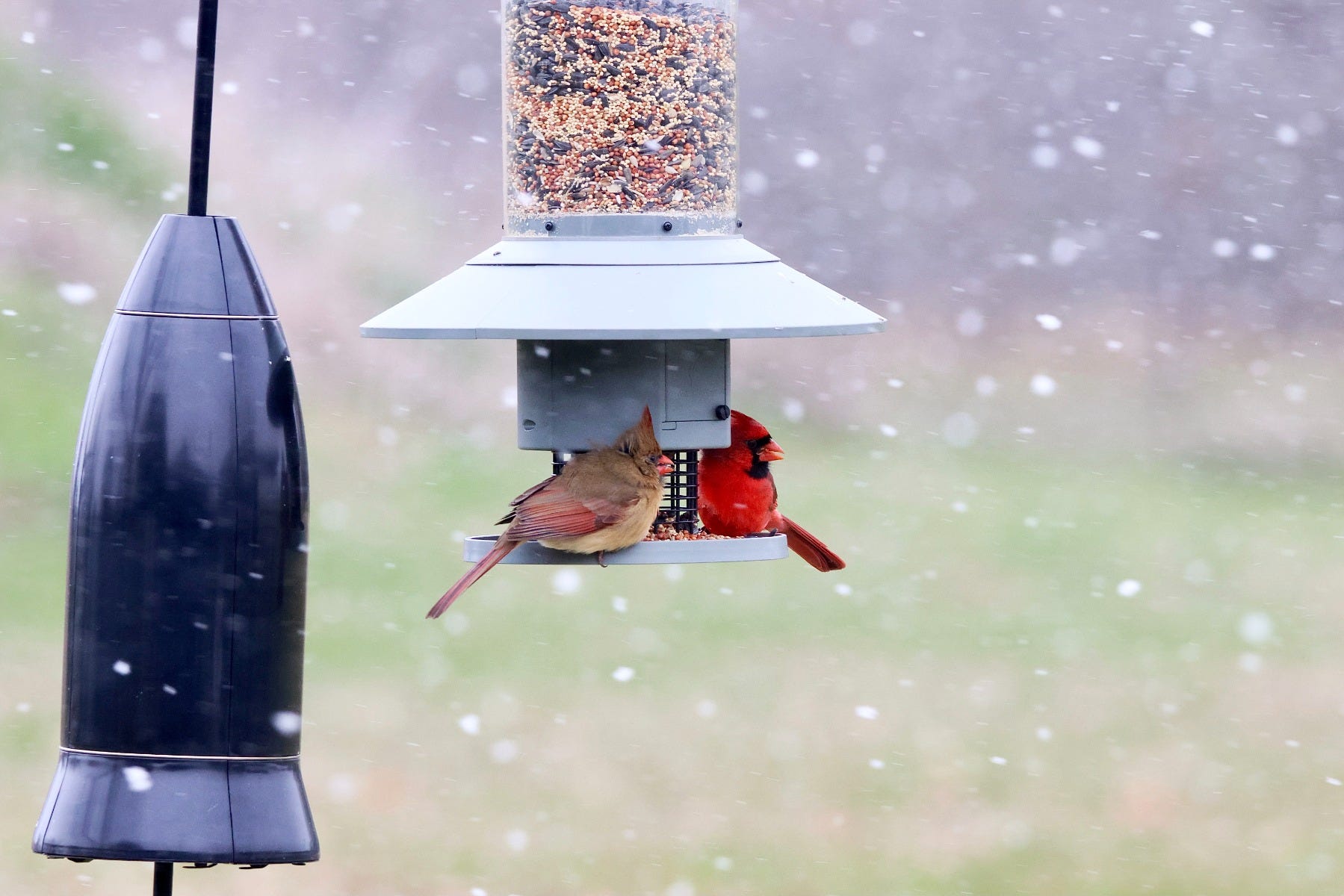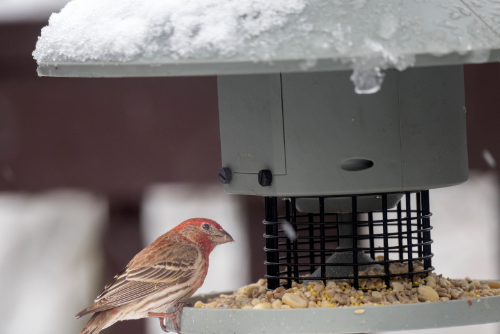- May 23, 2022
Birds to watch for this summer
The temperature outside continues to rise and summer is right around the corner! Unfortunately for bird watching enthusiasts, the increased availability of natural food sources may result in less visitors to your feeder, but don’t despair! We’ll be taking a look at the birds that can still be found at your feeder during the summer, how to identify them, and their preferred types of feed, to help you get the most enjoyment out of your backyard bird feeder even when it may be a little less crowded!
There are different bird species to see in the summer depending on your region. In this article we’ll be focusing on birds that summer in the United States, but many of these species can be spotted in Mexico and Canada as well!
Chipping Sparrows
Found Across the United States and north into Canada during the summer, the Chipping Sparrow migrates south to Mexico for the Winter. Generally about 5 to 6 inches in length, Chipping Sparrows are rust colored on top and gray below, with a reddish cap during breeding season that returns to a brown color in the winter. This bird does not show interest in sunflower seeds, but will visit your feeder for millet, shelled peanuts, and crushed pecans.
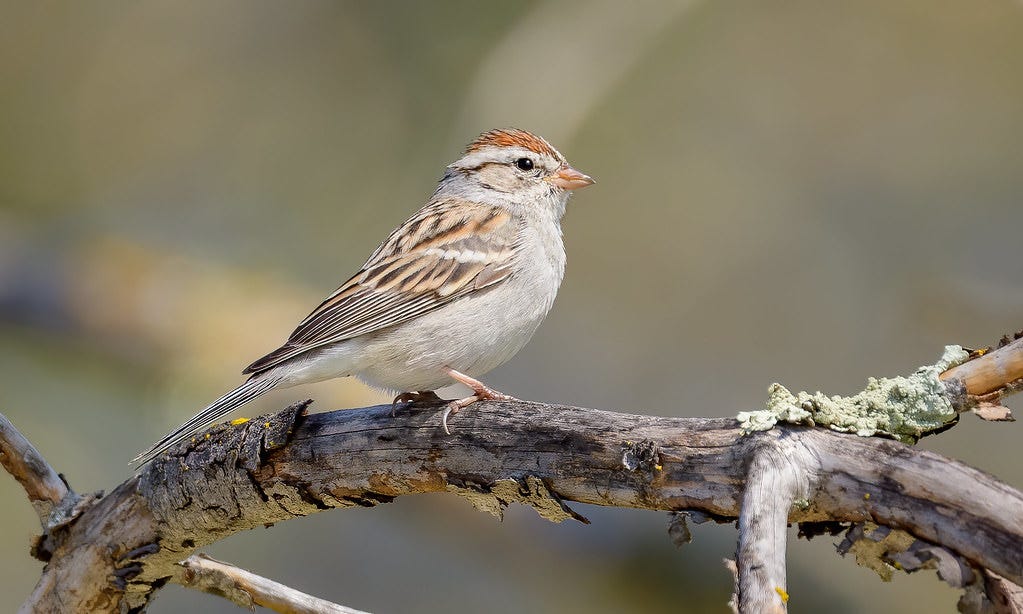

Indigo Buntings
Indigo Buntings tend to spend their winters in South/Central America, but in April and May they make their way back north. During the summer they can be found across the south and throughout the eastern United States, as far north as some of southeastern Canada, though generally not seen in northwestern states. These are small birds ranging 4 ½ to 5 inches in length, about the size of a sparrow. The males display a brilliant bright cerulean blue plumage with a darker indigo head and black on the wings and tail during the summer months to attract their mates, but turn brown (darker on top than bottom) in the winter to match their female counterparts, who remain brown year round. While Indigo Buntings get most of their summer sustenance from insects, They will still be looking for seed to eat as they arrive during their April - May migration period. Make sure to keep a full feeder during these months to maximize your chances of a visit from these migratory birds!
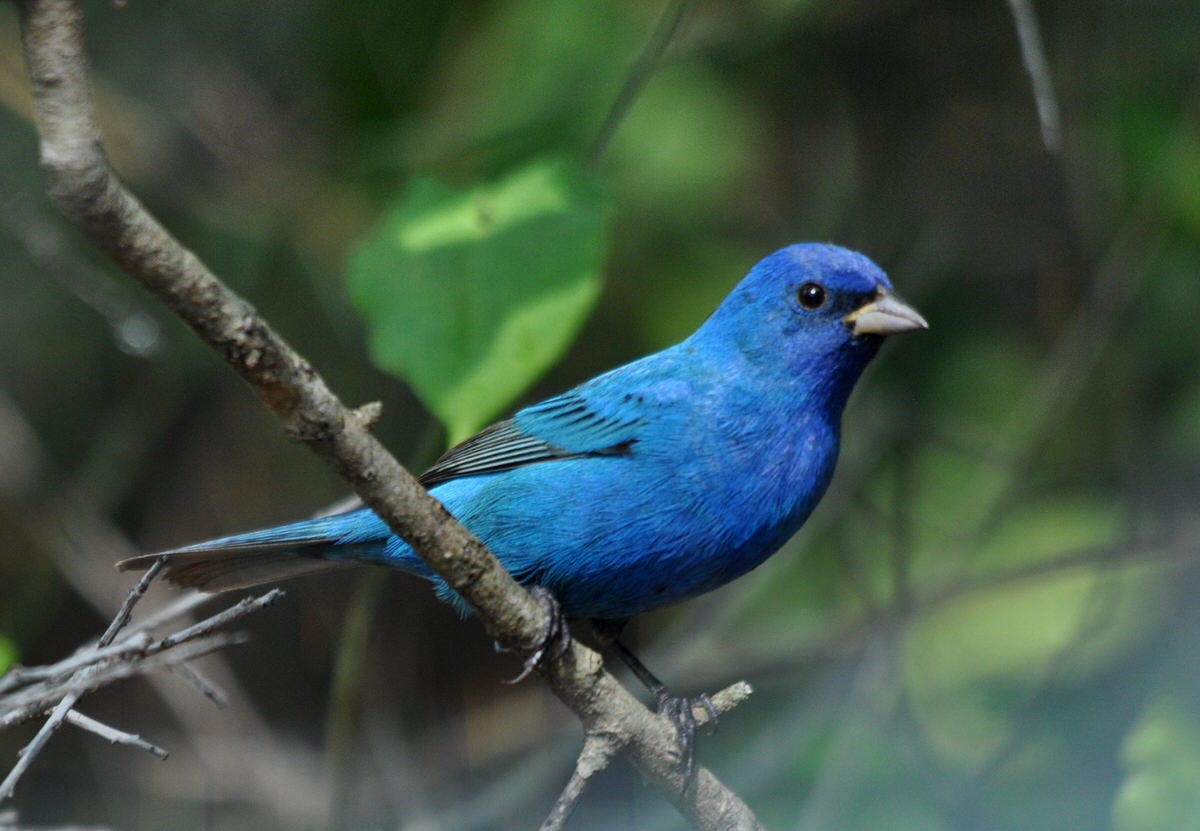

Northern Cardinal
The Northern Cardinal is one of the most recognizable birds in the United States! It’s the mascot of more than one sports team, and is even the state bird of 7 states!
One of every bird watching enthusiast's favorites, the Northern Cardinal can be found throughout the eastern US and as far west as Texas. They are between 8 and 9 inches long, with a plump body and a long tail.The female is a little harder to identify, she has a brown/olive coloration with some red on the edges of her tail feathers and a reddish beak, but the male Cardinal has one of the most distinct and vibrant red colorations out there with a black mask on its face and a relatively large conical beak, great for cracking the hulls of black oil sunflower seeds, though they eat a wide variety of seeds, and are easily attracted to a well stocked feeder!
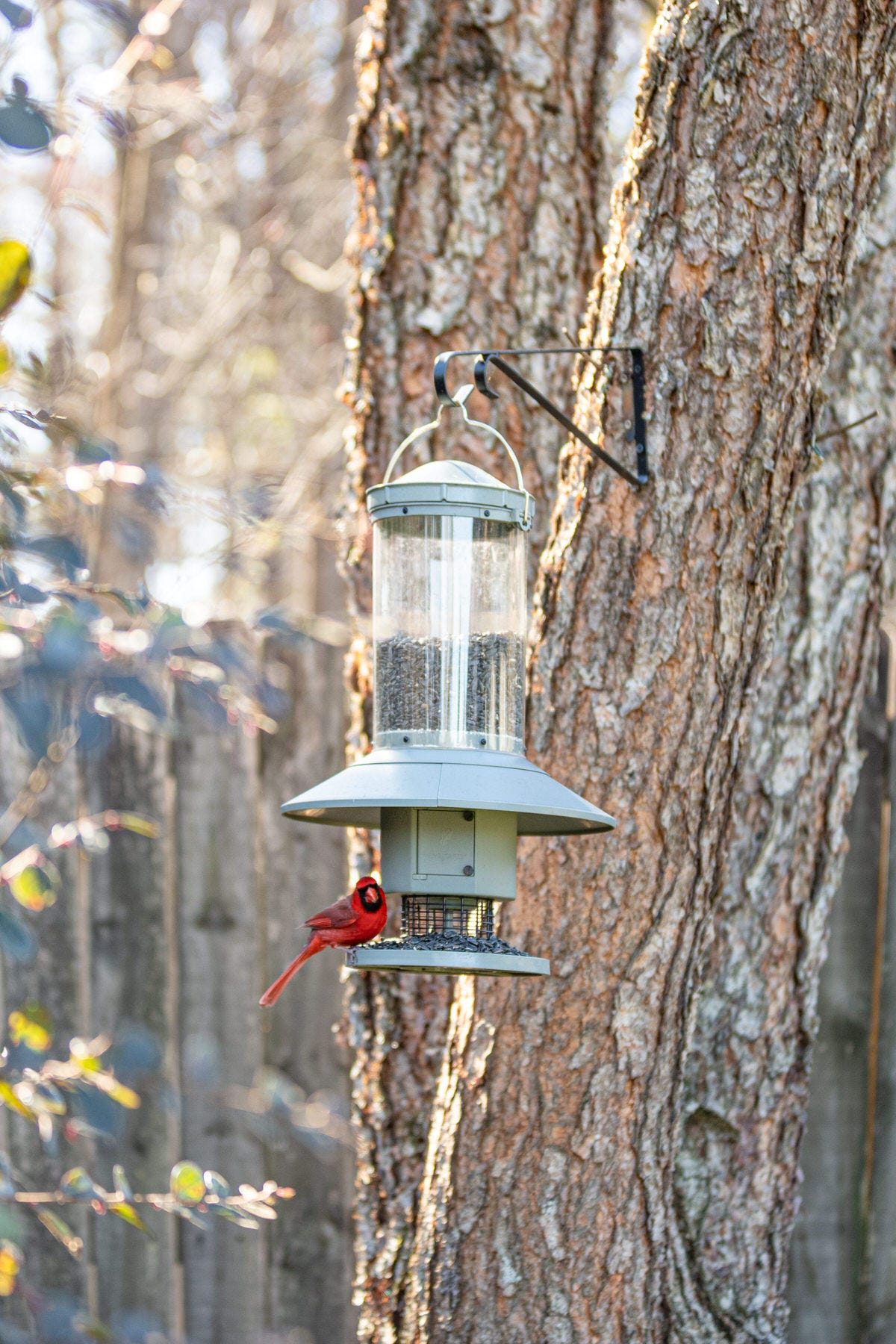

Blue Jay
Blue Jays are a Commonly spotted bird across the eastern and central United States all year round. The Blue Jay can be identified by its distinct blue and white coloration with a black U shaped collar that is shared by both males and females. They also have an easily identifiable sky blue and black bar pattern down their wings and tail. Generally 9 to 12 inches in length, Blue Jays are known to be particularly food aggressive and may bully smaller birds, even raiding nests or worse. They like to stock up on food and save it for later, so the timed dispensing feature of the Wingscapes Autofeeder is a great tool to keep them from eating up all your feed, and ensure that your other visitors get a chance to eat as well.
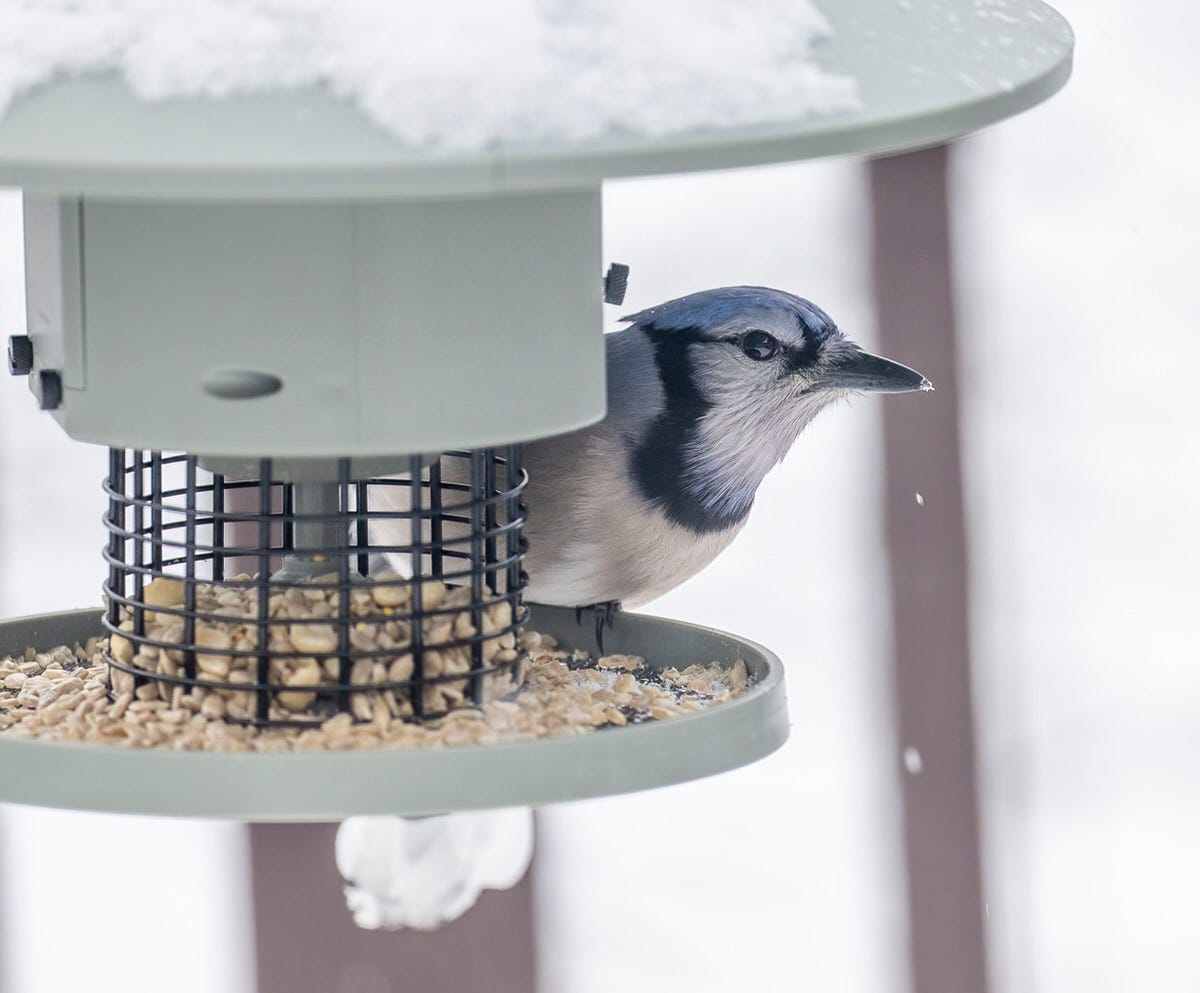

Photo courtesy of Jocelyn Anderson.
Red Bellied Woodpecker
The Red Bellied Woodpecker is an all year resident of the Eastern half of the United States, where they are one of the easiest woodpecker varieties to come across. These birds are fairly large, ranging from 9 to 10 ½ inches long. They are light gray in color with black stripes across their backs and wings and a red nape that continues into a red crown on males. The slight reddish coloration on the belly is somewhat ironically quite difficult to spot when attempting to identify this bird. Red-Bellied Woodpeckers love to eat insects and nuts, best drawn to feeders with peanuts or a suet block.


Photo courtesy of Jocelyn Anderson.
Carolina Chickadee
The Carolina Chickadee is a year-round resident of the Southeastern United States, found as far north as New Jersey and as far west as Texas. A small 4 ½ to 5 inch bird, the Carolina Chickadee is gray in color, darker on top than bottom, with a black head featuring a white band. Carolina Chickadees are fond of backyard feeders and visit them often, where they will usually retrieve one seed at a time, flying off to either store or eat the seed before returning for another. They are happy to eat most common ingredients in bird feed, including black oil sunflower seed, safflower seed, mealworms, and nuts.
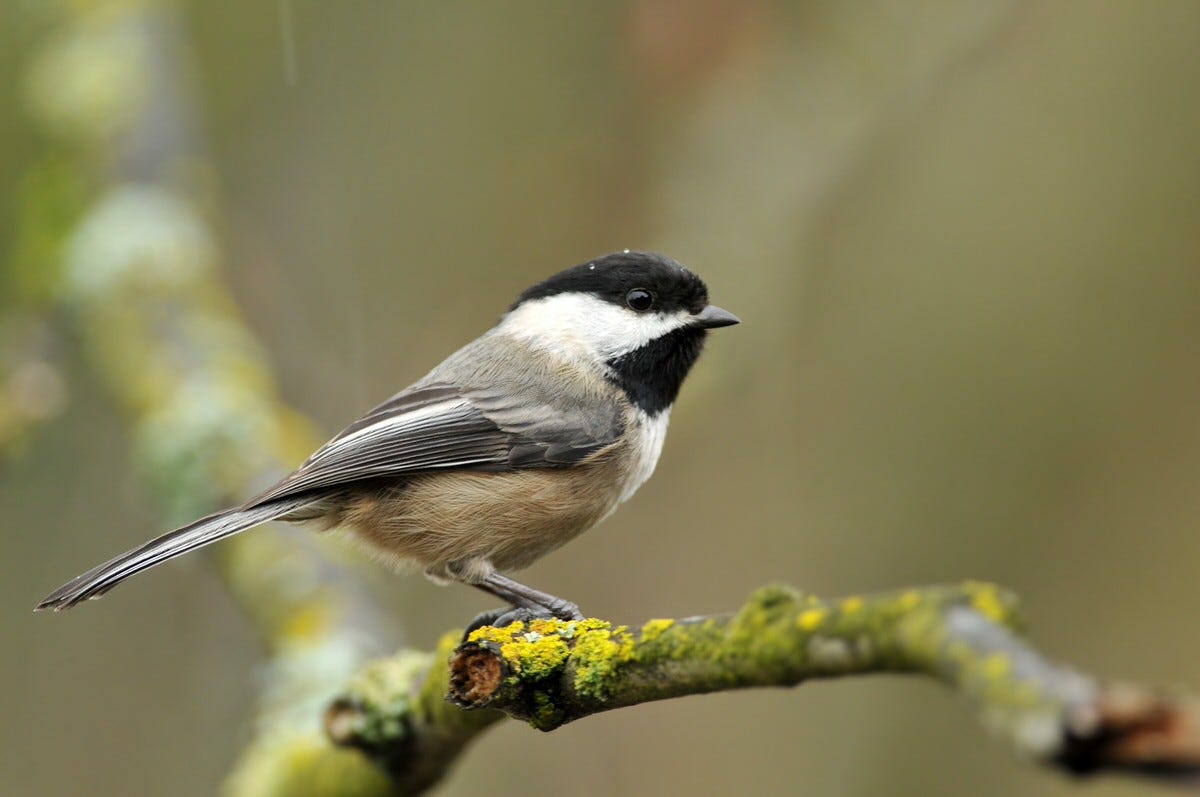

Eastern Bluebird
Another favorite of avid bird watchers,the Eastern Bluebird is frequently seen on any available perch in open areas. Found year-round in the southeastern United States, these birds will migrate north as far as southern Canada in the summer to breed, and south into Mexico in the winter. They measure 6 to 8 inches in length and males sport a brilliant blue top coloration, with a brownish red breast and some white on the belly. Females are a more pale gray color with some blue on the wings and tail, as well as a lighter more orange breast. These birds will be drawn to a large open yard. Though they eat mostly flying insects, they may pay a visit to a feeder with mealworms, fruit, or sunflower chips available, and will make frequent stops at birdbaths. In the spring and summer the female Eastern Bluebird will eat bits of eggshell as well, when she needs the extra calcium for production of her own eggs.
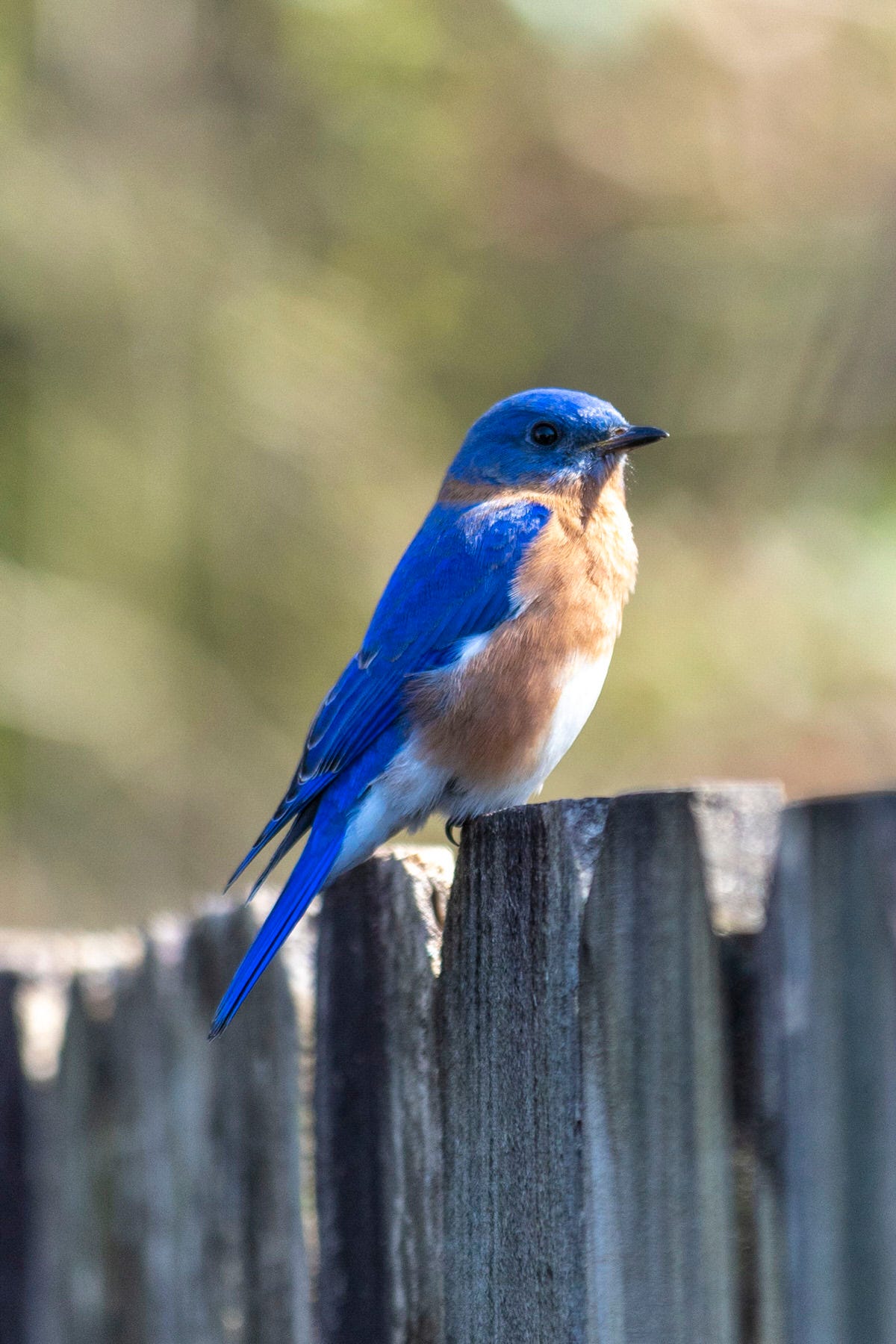

Mourning Doves
One of the most commonly seen birds across all of North America, the Mourning Dove can be found fairly far north into Canada, and all the way south into Mexico. A slender bird, usually about 12 inches in length, the Mourning Dove is mostly light brownish gray with a lighter pinkish underside and black spotting on the wings. Those hoping to see Mourning Dove at their feeder are in luck, with a diet comprised almost entirely of seeds and grains, they will be frequent visitors at just about any well stocked feeder!
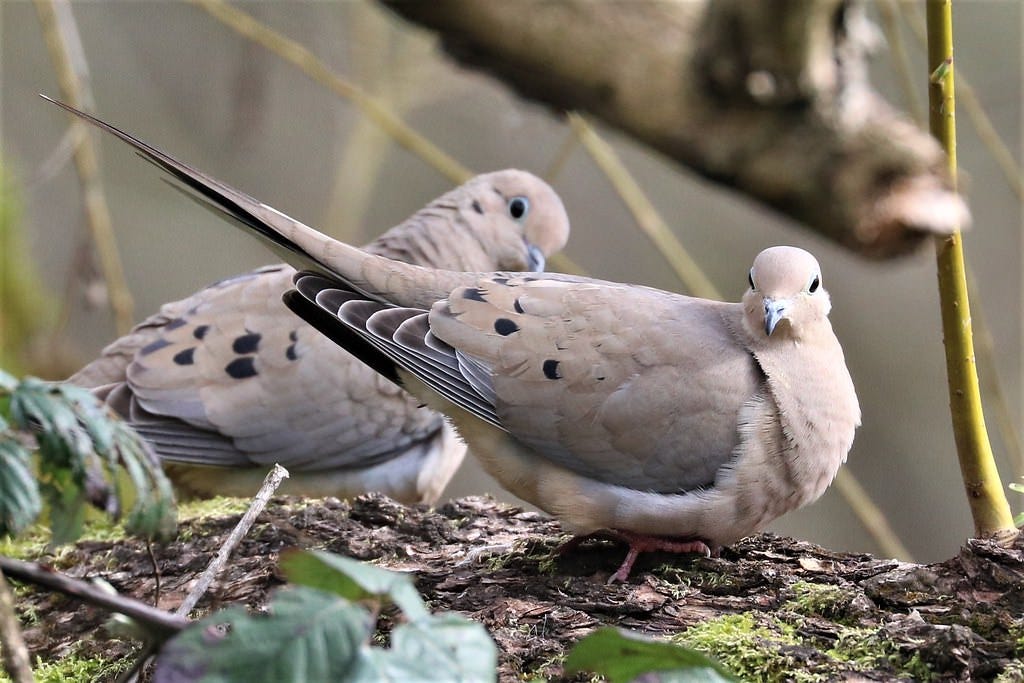

American Goldfinch
The Male American Goldfinch is sometimes referred to as a “Wild Canary” due to the bright yellow plumage it wears during its mating season. Found across most of the northern United States year-round, they migrate into Canada in the summer, and as far south as Mexico in the winter. Goldfinches are a small bird, about 4 to 5 ½ inches in length. After their spring molt, the male American Goldfinch displays a lemon yellow body for the mating season, accented by black wing and tail feathers. The female has a more muted color scheme with a yellow bib and brown wing and tail feathers. Frequent visitors to bird feeders, the American Goldfinch may take an interest in the black oil sunflower seed dispensed by your feeder, but they really love Nyer seed when available.
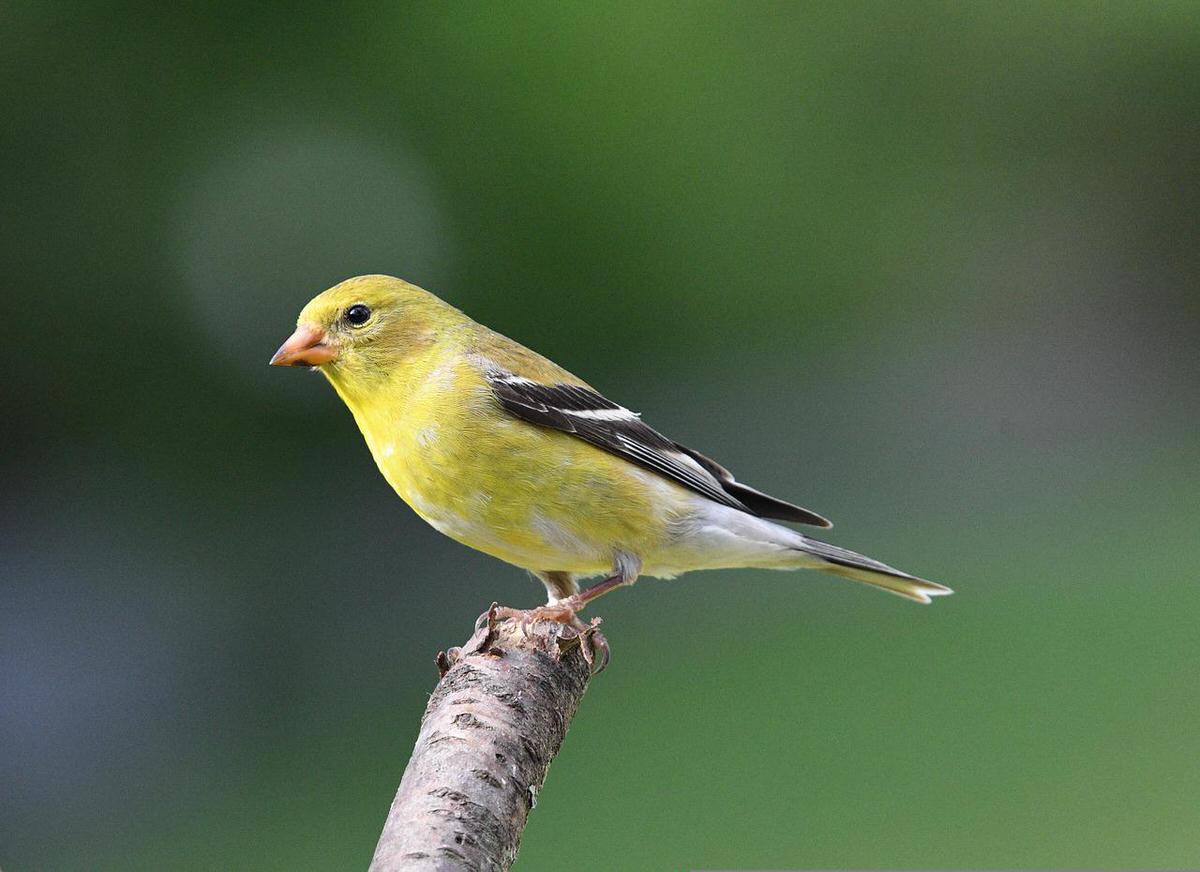

House Finches
Originally a bird found in the western United States, House Finches are now commonly seen in residential areas across the country as well as Mexico and Canada year-round. They are brown and gray on top, with streaks along the sides of their paler undersides, and males will show red to orange coloration on their crown, chest and rear. Like most backyard birds they are big fans of black oil sunflower seed, nut will congregate in numbers around a feeder filled with nyjer seed.
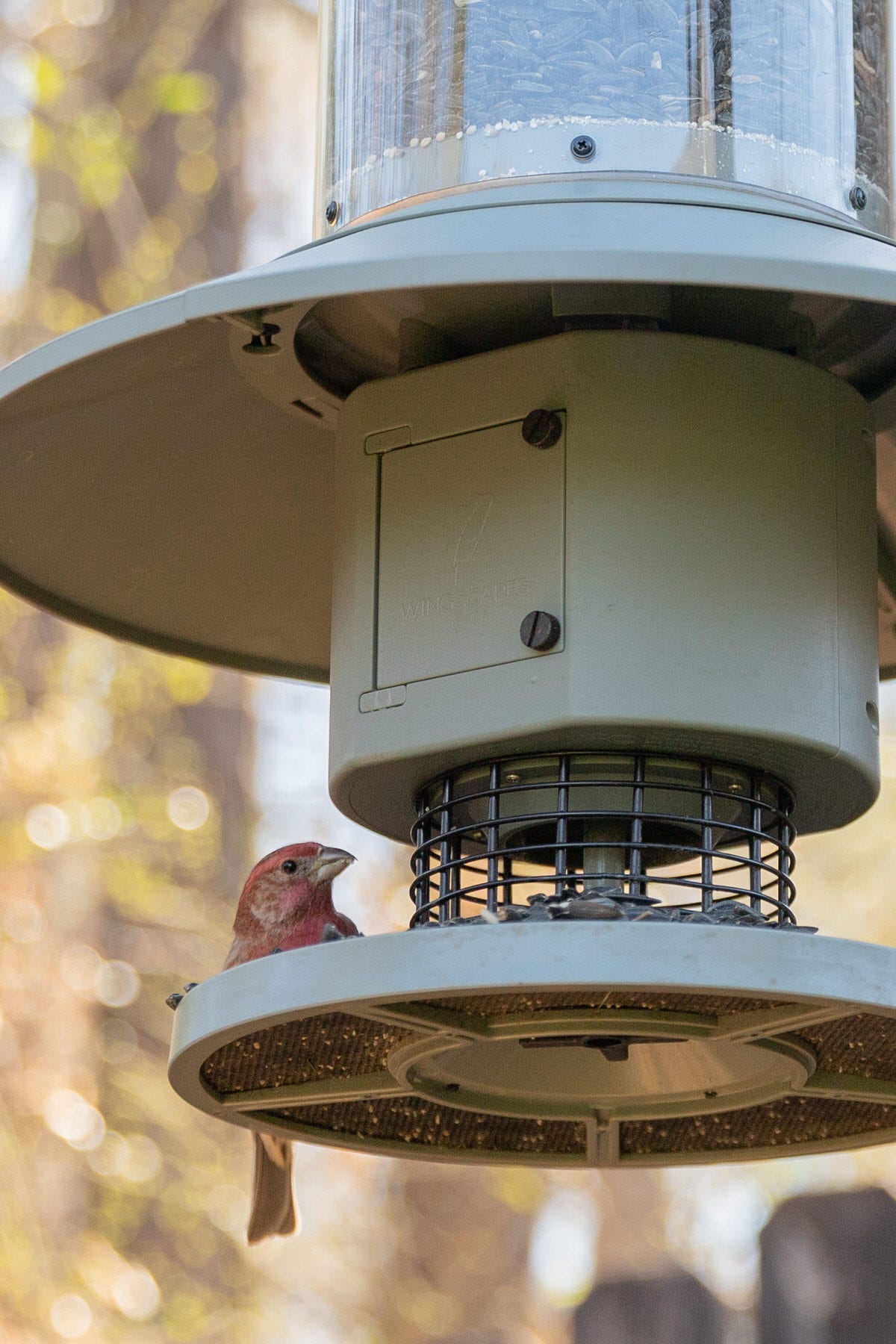

Pine Warbler
The Pine Warbler can be spotted year round in the southeastern United States, but migrate as far as southern Canada in the summer, and as far south as Northern Mexico and some Caribbean Islands in the Winter. An aptly named bird, Pine Warblers are partial to pine trees, and are usually spotted in their branches. Sometimes confused with goldfinches due to the adult male’s bright yellow color, the Pine Warbler is slightly longer than a Goldfinch, around 5 to 5 ½ inches. Female and young Pine Warblers are olive brown with white bellies and two white bars across each wing. The adult male sports its bright yellow color on its throat and breast, sharing the olive brown upper and wing bars of its female counterpart. They are the only warbler that regularly eats seeds found at feeders, preferring to dine on millet, cracked corn, and of course, sunflower seed!
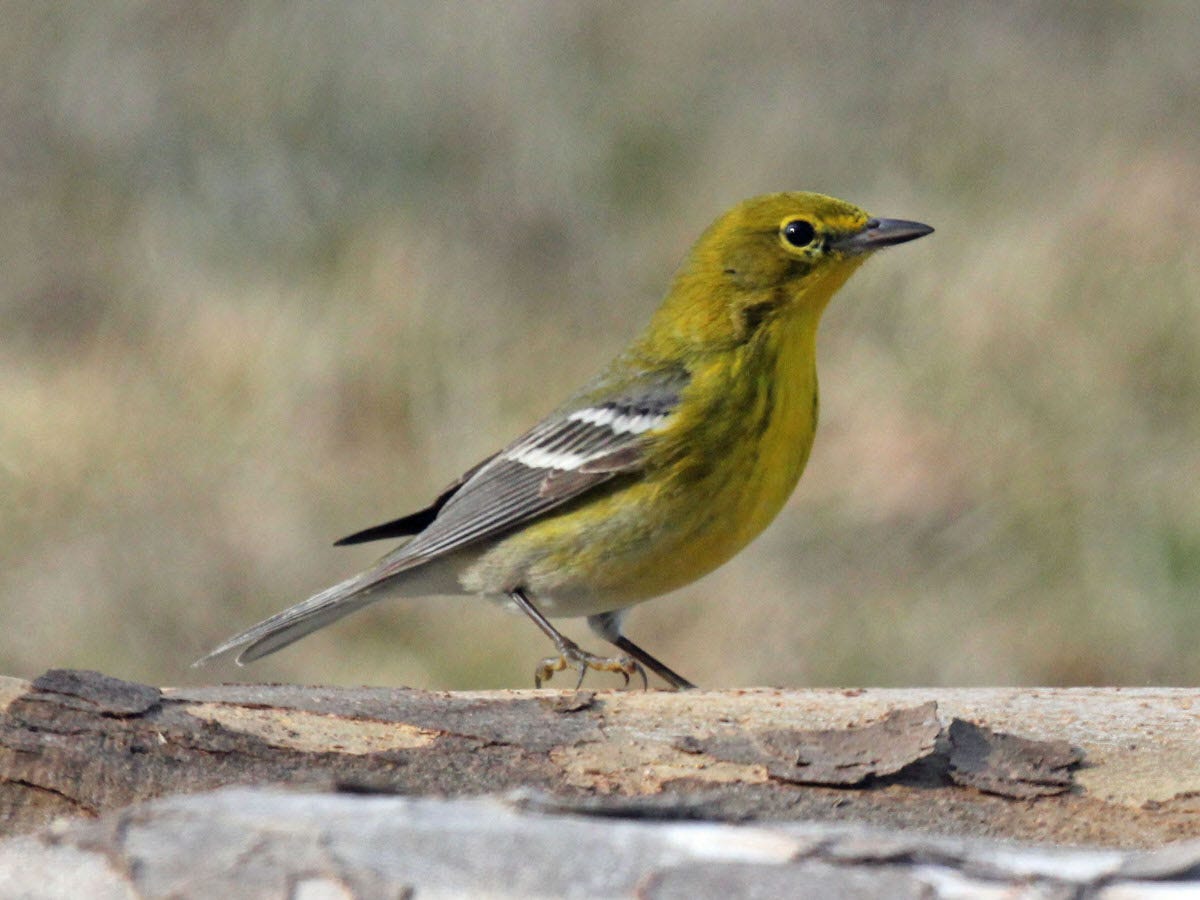

No matter what birds you are trying to draw into your yard this summer, keeping a well stocked feeder throughout the season will show your year round resident birds that your yard is a dependable source of food, and will keep them coming back more and more frequently as the summer months give way to the scarcity of winter. Enjoy your summer, and happy birding!

